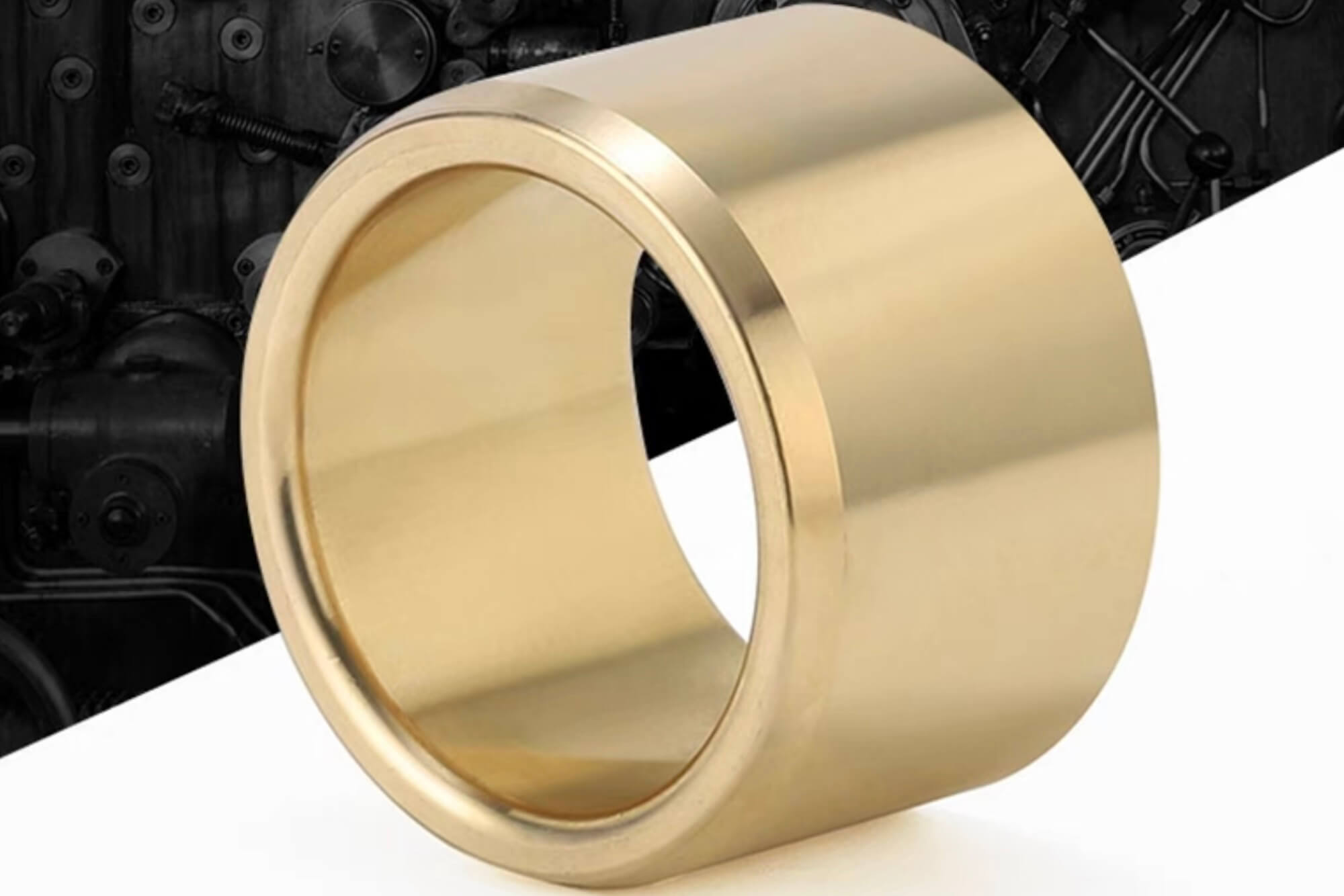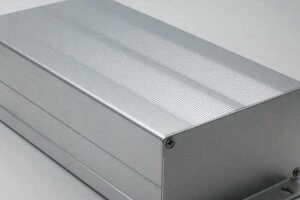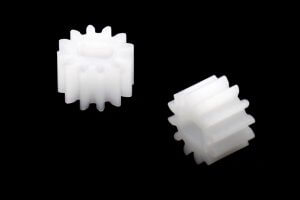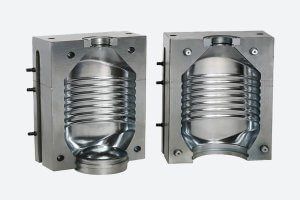I. Introduction
Bronze bushings are an indispensable component in the world of mechanical engineering. They provide critical support for rotating parts, reduce friction, and enhance the efficiency of countless machines. With the advent of CNC machining, the possibilities for customizing and improving the performance of bronze bushings have expanded significantly. From my experience, I’ve seen how a properly machined and installed bushing can drastically improve the performance of a system, making CNC-machined bronze bushings a true game-changer in industries ranging from automotive to aerospace.
This article delves deeply into the interplay between bronze bushings and CNC machining, explaining their characteristics, applications, and how to maximize their potential. By the end of this guide, you’ll understand why these components are so valuable and how CNC machining makes them even more effective.
II. What Are Bronze Bushings?
Definition and Characteristics
Bronze bushings, also known as bronze bearings, are cylindrical mechanical components designed to support rotating or sliding shafts inside machines. Made primarily of bronze alloys, they are prized for their durability, corrosion resistance, and low friction characteristics. They’re commonly used in environments where other materials may wear out or fail due to heat, load, or environmental factors.
Bronze bushings have several defining features:
- High Load Capacity: They can handle significant weight without deforming, making them ideal for heavy machinery.
- Self-Lubrication: Oil-impregnated variants reduce the need for external lubrication, enhancing reliability and reducing maintenance.
- Corrosion Resistance: Their natural resistance to oxidation and corrosion makes them suitable for harsh environments, such as marine or chemical industries.
- Thermal Conductivity: Bronze dissipates heat efficiently, protecting adjacent components from thermal damage.
- Versatility: They can be tailored to specific shapes, sizes, and functionalities, depending on the requirements.
Types of Bronze Bushings
Bronze bushings come in various types, each designed for specific use cases. Below is a comprehensive comparison:
| Type | Composition | Key Features | Applications |
|---|---|---|---|
| Phosphor Bronze | Copper, Tin, Phosphorus | High strength, excellent fatigue resistance | Gears, pumps, and industrial machinery |
| Oil-Impregnated | Bronze infused with lubricating oil | Self-lubricating, low maintenance | Electric motors, compressors |
| Aluminum Bronze | Copper, Aluminum, Iron | Exceptional corrosion resistance | Marine equipment, aerospace parts |
| Lead Bronze | Copper, Lead, Tin | High machinability, excellent wear resistance | Heavy machinery, high-load applications |
| Bimetallic | Steel-backed bronze layer | High durability, cost-effective | Automotive bearings, gear systems |
Why Choose Bronze Bushings?
Bronze bushings offer a unique balance of mechanical properties that make them a superior choice for many applications. They can handle high loads, operate in extreme conditions, and offer exceptional durability. Their adaptability through CNC machining further extends their utility, allowing for intricate designs that suit even the most demanding applications.
Moreover, the cost-effectiveness of bronze bushings adds to their appeal. While other materials might offer similar performance, few can match the combination of affordability, performance, and longevity that bronze provides. For industries looking for reliable, high-performance components, bronze bushings are an obvious choice.
III. CNC Machining and Its Role in Bronze Bushings
Why CNC Machining for Bronze Bushings?
CNC machining has transformed how bronze bushings are manufactured. Traditional methods often involve higher tolerances and less flexibility in design, but CNC machining brings precision, repeatability, and customization to the table. Here’s why CNC machining is ideal for bronze bushings:
- Precision Engineering: CNC machines can achieve tolerances as fine as 0.001 inches, ensuring a perfect fit for critical components.
- Complex Geometry: Intricate designs, such as lubrication grooves or custom flanges, are easily achievable with CNC machining.
- Consistency: Automated processes ensure that each bushing meets the same exacting standards, even in large production runs.
- Efficiency: CNC machining reduces production times and waste, making it a cost-effective solution for both small and large projects.
- Customization: Unique designs tailored to specific applications are easier to produce with CNC technology.
The CNC Machining Process for Bronze Bushings
Creating a bronze bushing involves several key steps, each of which is optimized for precision and performance:
- Material Selection: The process begins with selecting the appropriate bronze alloy based on the application. Factors like load, speed, and environmental conditions are considered.
- Rough Cutting: Using a CNC lathe, the raw bronze material is cut into blanks of the desired dimensions.
- Turning and Boring: The blanks are shaped into cylinders, with inner and outer diameters bored to precise measurements.
- Groove and Feature Addition: CNC mills add lubrication grooves, holes, or other custom features to the bushing.
- Surface Finishing: Polishing and grinding ensure a smooth surface, reducing friction and enhancing performance.
- Quality Control: Every piece is inspected to ensure it meets the specified tolerances and design criteria.
Each step in this process is designed to maximize the performance and longevity of the finished bushing.
Common Challenges and Solutions
Despite its advantages, machining bronze presents unique challenges. Here’s how to overcome them:
| Challenge | Cause | Solution |
|---|---|---|
| Tool Wear | Bronze is abrasive on cutting tools. | Use carbide or diamond-coated tools for durability. |
| Surface Roughness | Poor finishing techniques. | Increase polishing passes and use finer abrasives. |
| Material Deformation | Excessive cutting forces. | Reduce feed rates and optimize tool sharpness. |
| Chip Removal | Sticky chips during cutting. | Apply proper coolant and use chip-breaking tools. |
Addressing these issues ensures the efficiency and quality of CNC-machined bronze bushings.
IV. Applications of Bronze Bushings in Different Industries
Bronze bushings are incredibly versatile and are used in a wide range of industries. Below are some notable examples:
1. Automotive Industry
In the automotive sector, bronze bushings are found in:
- Suspension Systems: Reducing vibration and friction in high-stress environments.
- Engines: Supporting crankshafts, camshafts, and other rotating parts while dissipating heat effectively.
- Transmissions: Providing reliable performance in systems subjected to constant motion and pressure.
2. Aerospace Industry
In aerospace, where precision and reliability are critical, bronze bushings excel in:
- Landing Gear: Withstanding immense impact forces and variable loads.
- Engines and Turbines: Operating under extreme temperatures and pressures without failure.
3. Industrial Equipment
Bronze bushings are also widely used in industrial machinery:
- Pumps and Compressors: Ensuring smooth operation in high-pressure environments.
- Conveyor Systems: Reducing wear and extending the life of moving parts.
4. Consumer Products
Even in everyday applications, bronze bushings offer durability and reliability:
- Appliances: Found in washers, dryers, and other household machines.
- Fitness Equipment: Supporting smooth operation in treadmills, ellipticals, and exercise bikes.
Bronze bushings’ adaptability and dependability make them a critical component in countless systems.
V. How to Choose the Right Bronze Bushings for Your Project
Selecting the right bronze bushing involves evaluating several factors:
- Load Requirements: Choose a bushing that can handle both static and dynamic loads without deformation.
- Lubrication Needs: For applications with limited maintenance, oil-impregnated bushings are ideal.
- Environmental Conditions: Aluminum bronze is best for corrosive environments, while lead bronze works well under heavy loads.
- Customization: For unique designs, CNC machining allows for precise customization to meet specific requirements.
- Cost Considerations: Balance the material and machining costs with the performance benefits.
VI. Maintenance, Installation, and Replacement of Bronze Bushings
Maintenance Tips
Proper care is essential for extending the life of bronze bushings. Here are some tips:
- Lubrication: Even self-lubricating bushings benefit from occasional lubrication to reduce friction and wear.
- Cleaning: Remove dirt and debris to prevent abrasion.
- Inspection: Regularly check for signs of wear, such as scoring or deformation.
Installation Best Practices
Correct installation ensures optimal performance:
- Housing Preparation: Clean and deburr the housing before installing the bushing.
- Press Fit: Use a press tool to avoid damaging the bushing during installation.
- Alignment: Ensure proper alignment to reduce uneven wear.
When to Replace
Signs that a bushing needs replacement include:
- Increased noise or vibration.
- Visible cracks or excessive wear.
- Diminished performance, such as overheating or reduced efficiency.
VII. FAQ
- What are bronze bushings?
Bronze bushings are cylindrical mechanical components made from various bronze alloys. They reduce friction and support rotating or sliding parts in machinery. Known for their strength, corrosion resistance, and thermal conductivity, they are used in industries like automotive, aerospace, and industrial equipment. - Why are bronze bushings preferred over other materials?
Bronze bushings are preferred because of their excellent durability, self-lubrication properties, and resistance to corrosion. Unlike plastics or softer metals, bronze can handle high loads, extreme temperatures, and harsh environments while maintaining its structural integrity. - What is the role of CNC machining in manufacturing bronze bushings?
CNC machining allows for precise customization of bronze bushings, ensuring tight tolerances and complex geometries. It is essential for creating features like lubrication grooves or achieving specific dimensions, making the bushings more effective for their intended applications. - How do I choose the right type of bronze for my bushing?
The choice depends on your application. For high-strength requirements, phosphor bronze is ideal. For environments with limited maintenance, oil-impregnated bronze works well. Aluminum bronze is suitable for corrosive environments, while lead bronze is excellent for heavy loads. - Can bronze bushings handle high temperatures?
Yes, bronze bushings, particularly aluminum bronze variants, can withstand high temperatures. Their thermal conductivity also helps dissipate heat efficiently, making them suitable for engines, turbines, and other high-temperature applications. - How do self-lubricating bronze bushings work?
Self-lubricating bushings are infused with lubricating oil during manufacturing. When the bushing operates, the heat generated causes the oil to be released onto the surface, reducing friction and wear without the need for external lubrication. - What are the common signs of wear in bronze bushings?
Signs of wear include increased vibration, noise during operation, visible scoring or cracks, and reduced efficiency, such as overheating or slower performance. Regular inspections can help detect these issues early. - What tools are used to machine bronze bushings?
Common tools include carbide-tipped or diamond-coated cutting tools for durability, boring bars for internal diameters, and polishing wheels for finishing. CNC machines are essential for achieving precise dimensions and intricate features. - How do I maintain bronze bushings for optimal performance?
To maintain bronze bushings, ensure regular cleaning to remove dirt or debris, apply lubrication if required, and inspect for signs of wear or damage. Preventive maintenance can significantly extend the bushing’s lifespan. - What are some common challenges in machining bronze bushings?
Challenges include tool wear due to bronze’s abrasive nature, difficulty removing chips during cutting, and maintaining surface smoothness. These issues can be mitigated by using appropriate cutting tools, applying coolant, and optimizing feed rates. - How are bronze bushings installed correctly?
Proper installation involves cleaning the housing to remove contaminants, using a press tool to insert the bushing without deforming it, and ensuring precise alignment. Misalignment can lead to uneven wear and premature failure. - Are bronze bushings environmentally friendly?
Yes, bronze bushings are environmentally friendly because bronze is a recyclable material. Additionally, self-lubricating bushings reduce the need for additional lubricants, minimizing environmental impact during use. - What are some common applications of bronze bushings in the automotive industry?
In the automotive sector, bronze bushings are used in suspension systems, engines (supporting crankshafts and camshafts), and transmissions. They reduce friction, improve efficiency, and withstand high loads and temperatures. - How do lubrication grooves in bronze bushings improve performance?
Lubrication grooves allow oil or grease to distribute evenly across the bushing’s surface. This reduces friction, minimizes wear, and ensures the component operates smoothly, especially in high-speed or high-load applications. - Can bronze bushings be reused or recycled?
Yes, bronze bushings can often be reused if they are still within acceptable wear limits. Additionally, bronze is fully recyclable, making it a sustainable choice for manufacturers and reducing waste.
Other Articles You Might Enjoy
- Choosing Between Bronze vs Brass for CNC Applications
Introduction to Bronze vs Brass in CNC Machining When selecting materials for CNC machining, bronze vs brass is a common comparison for machinists and designers alike. Both materials, bronze and…
- What are the common challenges in the process of precision CNC machining bronze parts?
What Materials Considerations Are Crucial for CNC Machining Bronze? Bronze alloys vary widely in their composition and properties, impacting their machinability and the quality of the final product. Key considerations…
- The Art of Burnished Bronze: Exploring Machining and Polishing Methods
Introduction Burnished bronze has been a material of fascination for many over the centuries. Whether you’re an artist crafting a masterpiece or an engineer designing industrial components, burnished bronze offers…
- Phosphor Bronze vs. Silicon Bronze for CNC Machining: A Detailed Analysis
Introduction to CNC Machining CNC (Computer Numerical Control) Machining signifies a pivotal advancement in the fields of manufacturing and engineering. This process utilizes computer software for the control and manipulation…
- Nickel Aluminum Bronze vs. Manganese Bronze in CNC Machining Applications
Nickel Aluminum Bronze vs. Manganese Bronze in CNC Machining Applications In the realm of metals used in CNC (Computer Numerical Control) machining applications, Nickel Aluminum Bronze and Manganese Bronze hold…
- Applications and Advantages of Bronze CNC Machining
1. Introduction: The Enduring Allure of Bronze in CNC Machining In this opening section, we explore the timeless appeal of bronze as a material for CNC machining. From its rich…
- Bronze Rivet Technology in CNC Machining
Bronze type that can process Rivet Phosphor Bronze Characteristics: High strength, excellent wear resistance, good elasticity. Applications: Springs, bearings, and parts requiring high wear resistance and elasticity. Tin Bronze Characteristics:…
- Exploring Bead Blasting in CNC Machining and Bronze Machining
Introduction Bead blasting and CNC machining are integral processes in modern manufacturing, each playing a crucial role in producing high-quality components. When combined, they offer unparalleled precision, surface finish, and…
- Custom Precision CNC Machining Services for Bronze Parts
Introduction to CNC machining and Bronze Parts Manufacturing Custom precision Computer Numerical Control (CNC) machining is a unique technology that employs computerized controls and machine tools to eradicate layers of…









